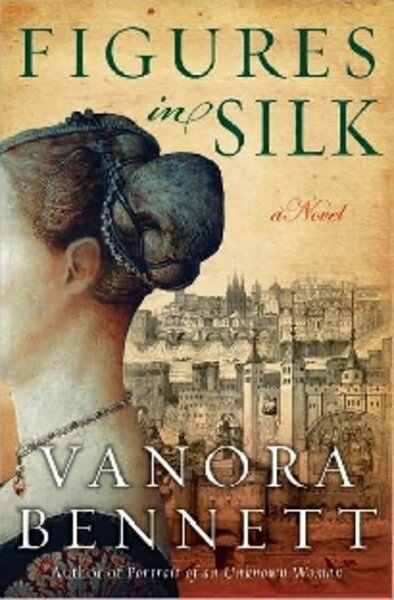Figures in Silk
Loading...
Don’t confuse Vanora Bennett with Philippa Gregory. Granted, it wouldn’t be a stretch to do so: Both are female British writers whose novels focus largely on the lives of English royalty in the 15th and 16th centuries.
But not everything about their work runs parallel. While it seems that Gregory has pretty much cornered the market on writing about the Tudors (in such bestsellers as “The Other Boleyn Girl” and “The Queen’s Fool”), Bennett tends to write about the people just on the edges of history.
Bennett’s first novel, “Portrait of an Unknown Woman,” centered on the ward of Sir Thomas More, and her latest book, Figures in Silk, delves into the world of Richard III, as seen through the eyes of a young silkwoman. It’s a fast read that effortlessly brings to life one of England’s most tumultuous periods.
The story begins in 15th-century London, near the end of the dynastic struggles now known as the Wars of the Roses. With the Yorkist King Edward IV restored to the throne, England is beginning to settle into a period of peace and prosperity.
Wealthy silk merchant John Lambert decides to marry off his two daughters, an act that will change their lives forever.
Bewitching eldest daughter Jane, bored with her husband, begins an affair with the newly crowned king and becomes his most notorious mistress (he describes her as “the merriest harlot” in the realm).
Younger daughter Isabel weds into the powerful silk dynasty the House of Claver and, after her husband’s death in a military skirmish, apprentices herself to her mother-in-law to learn the silk trade. As she grows in power and influence among the merchant class, Isabel uses her connection with the king to put in motion a plan to create an English silk-weaving industry that will challenge the silk weavers of Spain, Italy, and Persia.
And like her famous sister, Isabel also becomes a royal mistress – albeit a secret one – when she falls in love with the king’s brother, Richard, Duke of Gloucester.
But just as Isabel’s plan is about to come to fruition, King Edward dies, and the country is thrown into political upheaval. As her lover ascends the throne as King Richard III, Isabel struggles to protect her sister from political enemies, her business from ruin, and her heart from breaking as the world she knew begins to fall apart.
After a bit of a slow start, the story picks up steam when Isabel becomes her mother-in-law’s apprentice. From there on in, the narrative keeps up a brisk pace.
Bennett writes about 15th-century London as if she goes there for afternoon walks. It’s not that she lingers on descriptions of castles or clothing – she leaves that almost entirely up to the reader’s imagination, so those unschooled in the details of medieval life may have a harder time of it – but that she understands the people so well.
Bennett knows what drives her characters, both fictional and historical, and they seem as real and easy to relate to as your next-door neighbor.
Her characterization of Richard is particularly interesting. Calculating and practical, yet constantly afraid of losing everything he has, her Richard is neither a heartless fiend nor a maligned innocent.
A figure of villainy in English history, the real Richard has long been suspected of murdering his young nephews to secure his ascendancy to the throne. But no one has ever been able to prove he was guilty of the crime, or even that the two boys were actually murdered. Bennett wisely chooses to play on that ambiguity, neither confirming nor denying her Richard’s culpability in the boys’ disappearance.
This leads to one of the book’s most dramatic moments, as Isabel tries to reconcile the Richard she loves with the man everyone else believes is a murderer – and wonders if she’s misjudged his true nature.
“Figures in Silk” captures the uncertainty of a world in flux, a mood that many of its readers may share as their own world shifts around them. And yet, those looking for escape will find this book offers a satisfying respite. Vanora Bennett’s medieval England comes alive in ways a reader can immediately relate to, even while being transported away from the modern world.
Kathryn Perry is an intern at the Monitor.






